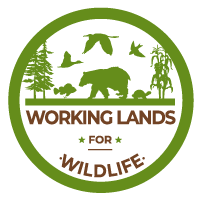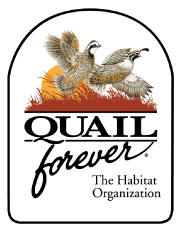Partners
Click the button on the right site to add an Organization. Include a logo plus 2-3 sentences on each major partner but don’t create new content if they are already in Landscape Partnership's Partner list. Organization must be tagged (Categorization tab) "Working Lands for Wildlife" to appear in this list.
Nevada Department of Wildlife
The Nevada Department of Wildlife (NDOW) is the state agency responsible for the restoration and management of fish and wildlife resources, and the promotion of boating safety on Nevada’s waters. NDOW is organized into seven divisions (Conservation Education, Habitat, Game, Data and Technology Services, Law Enforcement, Wildlife Diversity and Fisheries) that develop programs and projects, and three regions (eastern, southern and western) that implement these programs.
New Jersey Division of Fish and Wildlife
The N.J. Division of Fish and Wildlife is a professional environmental agency dedicated to the protection, management and wise use of New Jersey's fish and wildlife resources.
New Jersey's Endangered & Nongame Species Program
The Endangered and Nongame Species Program's (ENSP) mission is to actively conserve New Jersey's biological diversity by maintaining and enhancing endangered, threatened and nongame wildlife populations within healthy, functioning ecosystems.
New Mexico Game and Fish
It is the mission of New Mexico’s Game and Fish Department: “To conserve, regulate, propagate and protect the wildlife and fish within the state of New Mexico using a flexible management system that ensures sustainable use for public food supply, recreation and safety; and to provide for off-highway motor vehicle recreation that recognizes cultural, historic, and resource values while ensuring public safety.”
New York Department of Environmental Conservation
The mission of the department is to conserve, improve and protect New York's natural resources and environment and to prevent, abate and control water, land and air pollution, in order to enhance the health, safety and welfare of the people of the state and their overall economic and social well-being. DEC's goal is to achieve this mission through the simultaneous pursuit of environmental quality, public health, economic prosperity and social well-being, including environmental justice and the empowerment of individuals to participate in environmental decisions that affect their lives.
New York Natural Heritage Program
The NY Natural Heritage Program facilitates the conservation of New York’s biodiversity by providing comprehensive information and scientific expertise on rare species and natural ecosystems to resource managers and other conservation partners. We are a program of the State University of New York College Environmental Science and Forestry that is funded primarily by the NYS Department of Environmental Conservation and its partners.
North American Marine Protected Areas Network (NAMPAN)
The North American Marine Protected Areas Network (NAMPAN) is a network of resource agencies, marine protected areas (MPA) managers, practitioners and other relevant experts from Canada, Mexico, and the United States.
North Atlantic Aquatic Connectivity Collaborative
The North Atlantic Aquatic Connectivity Collaborative (NAACC) is a network of individuals from agencies and organizations focused on improving aquatic connectivity across a thirteen-state region.
North Carolina Forest Service
The NC Forest Service's primary purpose is to ensure adequate and quality forest resources for the state to meet its present and future needs.
North Carolina Herpetological Society
The North Carolina Herpetological Society was founded in 1978 by a small group of individuals with a mutual interest in North Carolina herpetology.
North Carolina Natural Heritage Program
North Carolina Natural Heritage Program's mission is to provide science and incentives to inform conservation decisions and support conservation of significant natural areas in North Carolina. By gathering and sharing information about rare species and natural communities, the Program ensures public access to information that is needed to weigh the ecological significance of natural areas and to evaluate potential ecological impacts of conservation and development projects. The Program sits within the North Carolina Department of Natural and Cultural Resources.
North Carolina State Southeast Prescribed Fire Update
Southeast Prescribed Fire Update is a source for the latest news in prescribed fire. The Update provides landowners, consultants, agencies, academia, and the prescribed fire community with current training opportunities, press releases, event happenings, information, and education materials pertinent to prescribed burning in the southeastern United States.
North Carolina Wildlife Resources Commission
The North Carolina Wildlife Resources Commission is the state government agency that sustains the state’s fish and wildlife resources through research, scientific management, wise use, and public input. The Commission is the regulatory agency responsible for the enforcement of the state's fishing, hunting, trapping, and boating laws.
Northwest FL Prescribed Burn Association
The Northwest Florida Prescribed Burn Association (NWFPBA) is a non-profit organization consisting of private landowners and other conservation-minded individuals interested in getting more prescribed fire on the landscape. The Northwest Florida PBA brings together knowledge, experience, and resources to put good prescribed fire on more private lands throughout the area. The region covered by this PBA is from Madison County to Escambia County in Northwest Florida.
Northwest Montana Hazardous Fuels Program
The treatment of hazardous fuels is one of the most proactive ways to reduce potential loss of life and property in the event of a wildland fire. By following Firewise™ practices, creating defensible space, and treating fuels, you can lower your fire risk while increasing the chances that fire protection agencies can effectively deal with a wildland fire should it occur. Cost- share funding is available now in some areas to help landowners with the cost of reducing their hazardous fuels.
Norwalk River Watershed Association
The Norwalk River Watershed Association, incorporated in 1996, is a nonprofit membership organization whose mission is to improve the water quality and fish and wildlife habitats of the 40,000-acre Norwalk River watershed; to restore the riverbanks, meadows and forests through invasive plant abatement and promotion of native species; to encourage recreational use of the river, the surrounding open space and its trails; and to promote research, legislative advocacy, education, cooperation, and action on the part of the stakeholders in the seven watershed towns in CT (Ridgefield, Redding, Wilton, New Canaan, Weston, and Norwalk) and NY (Lewisboro).
Oak Woodlands & Forests Fire Consortium
The Oak Woodlands & Forests Fire Consortium is an exchange for fire science information. Funded by the Joint Fire Science Program, our goal is to increase the availability and consideration of credible fire science information to those making land management decisions.
Oaks and Prairies Joint Venture
The Oaks and Prairies Joint Venture (OPJV) is a regional, self-directed partnership of government and non-governmental organizations and individuals working across administrative boundaries to deliver landscape-level planning and science-based conservation, linking on-the-ground management with national bird population goals. The OPJV activities focus on a broad spectrum of bird conservation activities including biological planning, conservation design, conducting “on-the-ground” conservation delivery projects, organizing outreach, research, and monitoring, creating decision support tools, and raising money for these activities through partner contributions and grants within the Oaks and Prairies Bird Conservation Region (BCR) and the Edwards Plateau BCR.
Partners in Amphibian and Reptile Conservation
Partners in Amphibian and Reptile Conservation (PARC) is an inclusive partnership dedicated to the conservation of the herpetofauna--reptiles and amphibians--and their habitats. Our membership comes from all walks of life and includes individuals from state and federal agencies, conservation organizations, museums, pet trade industry, nature centers, zoos, energy industry, universities, herpetological organizations, research laboratories, forest industries, and environmental consultants. The diversity of our membership makes PARC the most comprehensive conservation effort ever undertaken for amphibians and reptiles.
Pennsylvania Department of Conservation and Natural Resources
Established on July 1, 1995, the Pennsylvania Department of Conservation and Natural Resources is charged with maintaining and preserving the 120 state parks; managing the 2.2 million acres of state forest land; providing information on the state's ecological and geologic resources; and establishing community conservation partnerships with grants and technical assistance to benefit rivers, trails, greenways, local parks and recreation, regional heritage parks, open space and natural areas.


























